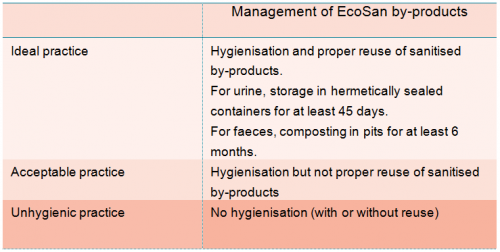IRC is developing a methodology to measure behaviour change in the context of a sanitation programme promoting EcoSan latrines.
Published on: 29/09/2014
The objective of WASH programmes, whether they consist of the construction of new water points or latrines or of promoting good management of drinking water, is always that the beneficiaries adopt the equipment and change their behaviour to use it properly. In the case of good hygiene practices associated with sanitation for instance, a community used to a clean and functional latrine will not be at all inclined to practice open air defecation. The adoption of good hygiene practices is fundamental to establishing lasting water and sanitation services.
It is important to reiterate that hygiene interventions are by definition actions that have an impact on the adoption of hygiene practices. Therefore, a latrine construction programme such as those implemented by LVIA in Burkina Faso can be considered to be hygiene interventions because it has a direct impact on a key behaviour: the actual use of latrines and the reuse of excreta for agriculture.
In the context of this collaboration the methodology developed and presented in a previous entry (see the link below) was adapted to EcoSan and extrapolated to include the collection, hygienisation (i.e. decontamination) and reuse of excreta. The following scale was developed:

In principle, an EcoSan latrine has two objectives:
The behaviour associated with these objectives is different, as indicated in the two practice scales developed by IRC – this one and the one presented in our previous blog entry. But what happens when only one of the objectives is achieved? Which objective should the EcoSan project promoter give priority to?
When used properly by households, EcoSan latrines have the undeniable advantage of closing the sanitation loop by enabling excreta to be recycled. Failing this, the excreta could contaminate the soil and pose a health risk for the community. This is why it is essential to accompany the households over time to ensure users adopt good behaviour. In an up-coming blog entry we will present an application of this methodology in the context of a partnership with the NGO LVIA in Burkina Faso.
Mélanie Carrasco, Amélie Dubé, IRC
At IRC we have strong opinions and we value honest and frank discussion, so you won't be surprised to hear that not all the opinions on this site represent our official policy.